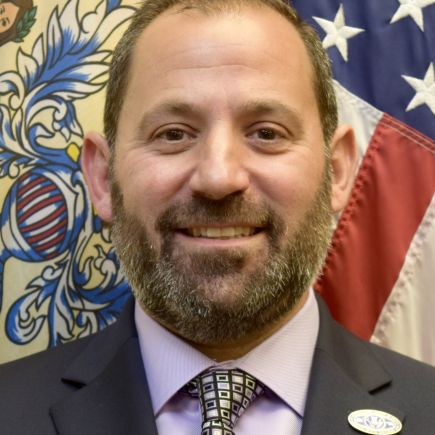
Message from Councilman Roc White | Dec. 15, 2023
In some areas of our community, when word of heavy rain is predicted, there is immediate dread. We have neighborhoods prone to floods, despite the ongoing efforts of our public works personnel to regularly clear brooks and sewers so that water stays as far from homes as possible.
There is no doubt that more work is needed to reduce the frequency and damage from ongoing flooding in Scotch Plains and the surrounding communities.
Some may believe flooding is a local issue that can be easily solved by adding some more sewer lines and keeping fallen leaves away from the grates. I wish that was the solution. But flooding of regional waterways does not stop at municipal borders.
The Township Council shares our residents’ deep concerns about flooding. Following Hurricane Ida, for example, we invited former Rep. Tom Malinowski to Scotch Plains for a detailed tour of neighborhoods prone to flooding and aggressively sought more federal funding to address the issue.
Mayor Josh Losardo explained how Scotch Plains floods from overrun culverts and stream channels that run generally north to south across the town (the Green Brook). We also spoke of common weather events, when the town floods in our east-central section, overflowing channels, brooks and ponds.
All agreed that flooding is a regional quandary that requires an ongoing partnership with Union County, the state and even the federal government.
Following the meeting in Scotch Plains, Malinowski helped secure nearly half a billion dollars in disaster supplemental flooding to complete the Green Brook Sub Basin Flood Control Project. We then met with Rep. Tom Kean earlier this year, with our congressman pledging to advocate for the federal funding needed to move forward.
Earlier this month, the Army Corps of Engineers was at town hall for a public hearing regarding next steps in the flood control project. Scotch Plains was more than pleased to host this regional meeting, in which our representatives and residents heard proposed solutions.
The talk focused on the need for coordination of a regional comprehensive plan, also involving Plainfield, North Plainfield and Watchung. This project was authorized all the way back in 1986 and work has been ongoing. The current study is funded by both federal and state agencies, as decision makers craft what we can only hope is a final, effective plan.
Each stage of federal work has specific requirements. The current stage involves public feedback, in Scotch Plains and elsewhere, through January 19 of next year. The Army Corps has developed four possible courses of action to control the water, such as building detention basins, floodwalls or levees, or dredging/clearing the channels and using wetlands restoration and other “nonstructural measures.”
The Army Corps hope to have a tentative action plan by February and release a report to the public by April. The end result would be recommendations to Congress for funding by September 2025.
For those who deal with flooding every time it rains, this timeline is not particularly impressive. We can’t wait for this federal initiative project as the “solution.” Rather, Scotch Plains needs to continually leverage support from our partners to keep moving forward.
I am pleased, for example, that Union County stepped in on one major project in our town, as the Green Brook often floods by Scotch Plains Park in the Watchung Reservation near the McDonald’s on Route 22 west.
Last year, workers rebuilt the rock channel along the eastern branch of the Green Brook which flows down Union Avenue and has flooded the highway during major rains. The county awarded $439,105 for stream bank stabilization to control the water flow, as well as to rebuild a wall of historical value that the Works Progress Administration built in 1936.
Meanwhile, we continue to direct our municipal staff to clear the various brooks and channels throughout town. Over the years, there has been many dead trees and other debris causing blockages and senselessly preventing the flow of water. During extreme events, this all can lead to unnecessary flooding, which is why we are so focused on routine maintenance and upkeep.
Moreover, last year we adopted an ordinance to address local flooding, instituting new requirements in the planning phase of a home. It is now required that soil percolation testing and groundwater analysis be undertaken for all construction projects in town as part of every development application.
Such tests indicate how quickly water moves through soil. The results for each building application help our engineers and planners better evaluate whether the soil under the property is sufficient to absorb runoff water, as well as what type of stormwater management improvements is needed before a development proposal moves forward.
As homes in Scotch Plains are continually expanded or torn down for new homes, it is imperative that we better understand how the water that flows beneath the surface and make smart decisions on construction based on hard facts, rather than guesswork.
To conclude, I am pleased the Army Corps is moving forward with addressing the Green Brook. For a permanent solution, we will need the continued assistance of the federal, state and county governments, as we continually call for regional solutions that will give property owners the relief they need.




